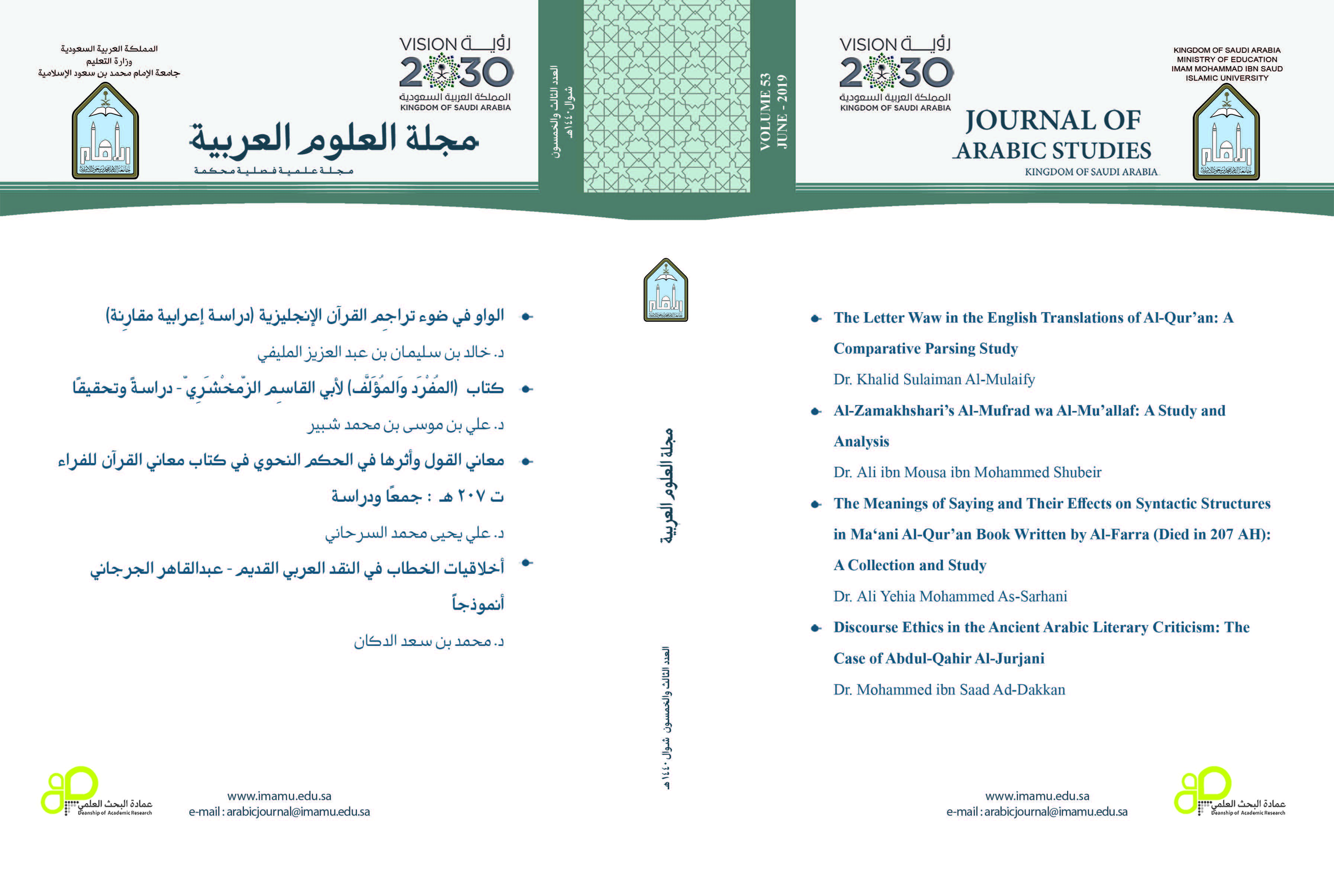The Meanings of Saying and Their Effects on Syntactic Structures in Ma‘ani Al-Qur’an Book Written by Al-Farra (Died in 207 AH): A Collection and Study
Keywords:
: syntactic structures; Al-Farra; saying; Arabic grammarAbstract
This study deals with the meanings of saying and their effects on syntactic structures in Ma‘ani Al-Qur’an Book written by Abu Zakaria, Yahya ibn Ziyad Al-Farra, who died in 207 AH. The research paper is composed of an introduction and a preface, along with four research parts, a conclusion and indices. The study specifically focuses on explaining the effect of the phrases and sentences indicating a saying- such as the prayer, calling, writing, and recommendation- on the syntactic structures of the word, and whether or not these are dealt with syntactically as the saying phrases and sentences. In his book, Al-Farra was interested in highlighting this issue. The significance of this study stems from the important implications it has to understanding the lexical and syntactic structures, and the differences in stylistics and syntactic interpretation. The study is based on reporting the views of the scholars who agreed or disagreed with Al-Farra, and discussing some of Al-Farra’s views. The study reached some results, including: a) Al-Farra had a unique view that the verb following the imperative form and its equivalent is regarded as an imperative verb; and if it occurs in the form of the present jussive (al-mudāriʿ-al-majzūm), the letter ya is added to it since it becomes a third-person-singular; b) the particle ’ani can be used or skipped after what is equivalent to the saying part, and using ’ani in that case indicates it is an equivalent to it; and thus Al-Farra viewed the particle ’an can be either an interpretive ’an or an infinitive ’an; and c) in contrast to the views reported by some grammarians such as As-Sayrafi and Ibn Hisham, the Grammarians of Kufa, including Al-Farra, did not deny the use of the interpretive ’an.




